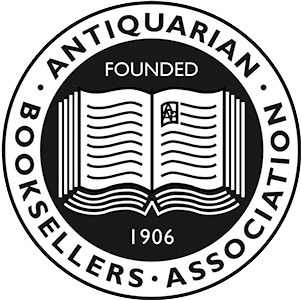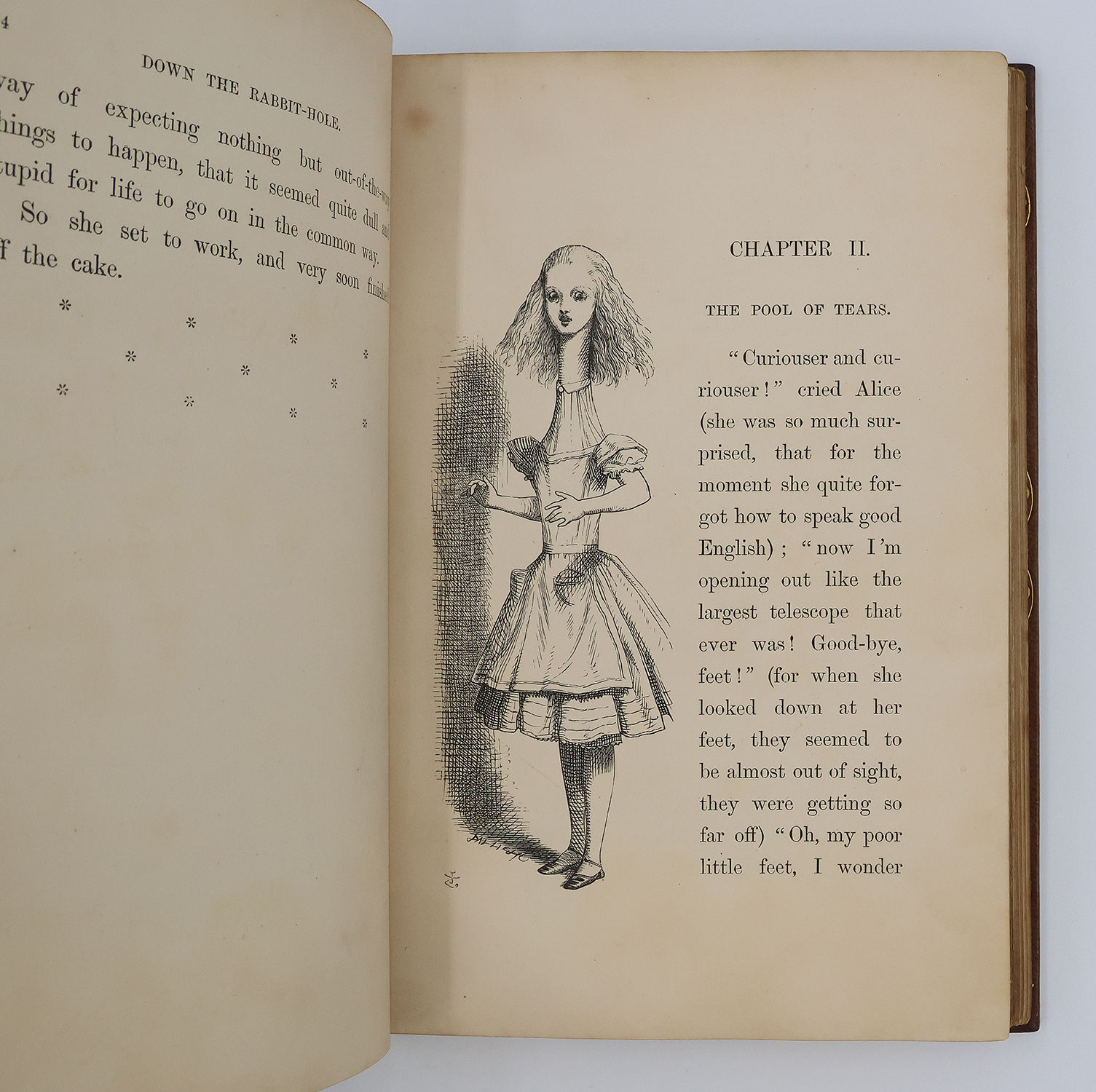London: Macmillan and Company. 1866 and 1872. First editions. First editions. Two volumes. Finely bound by Charles Elsden Gladstone in elaborately decorated full brown morocco, the spines with five raised bands and titles in gilt. Gilt decorated inner boards, marbled endpapers. Binder's initials stamped in gilt to the lower inner front board. All edges gilt. The publisher's cloth bound in as the front and rear pastedown of Through the Looking Glass. Illustrated with frontispieces and 90 illustrations across the two volumes by John Tenniel. The four page leaflet 'To All Child Readers of Alice In Wonderland', originally issued loosely laid in to first editions of Through the Looking Glass, has been retained and bound in. Some spotting and a couple of tiny closed tears to the margins of Alice's Adventures in Wonderland, otherwise a fine set. Alice's Adventures in Wonderland is the first published edition, the second overall: the book was originally printed in Oxford at the Clarendon Press in June 1865, but was suppressed when Carroll heard that the book's illustrator was dissatisfied with the quality of the printing. He recalled the few pre-publication copies he had sent out to his friends and donated them to hospitals, where most perished. Only 23 of those original "1865 Alices" are now extant, mostly in institutional holdings, thus creating one of the most famous black tulips of book collecting. The book was entirely reset by Richard Clay for the present authorized Macmillan edition, the earliest edition that can be realistically obtained. Although dated 1866, the edition was in fact ready by November 1865, in time for the Christmas market, and was published in a print run of 4,000 copies. The copy of Through the Looking-Glass is the first edition; like its predecessor, it was published for the Christmas market and bears the following year's date in its imprint. It was actually published in December 1871, in an edition of 9,000 copies. Charles Elsden Gladstone (1855-1919), the creator of these exquisite bindings, had a long and distinguished naval career, during which he rose through the ranks from Midshipman to Commander. Service papers record his expertise in advanced submarine weaponry and photography. That he was reportedly engaged in covert intelligence gathering recently prompted P. J. M. Marks, the British Library's Curator of Western Bookbindings, to refer to Gladstone as "a bookbinding James Bond", 007 another ex-Navy Commander with access to cutting edge technology and working undercover. Gladstone's bookbinding activities – his overcover work, if you will – appear to have been a labour of love, there being no evidence that he profited, or sought to, from such work (his navy salary and pension were both generous). While researching Gladstone, Marks was unable to uncover the origins or development of his impeccable craftsmanship, skills ordinarily requiring years of apprenticeship under an established binder. Marks did, however, find Gladstone's name "included in the annals of specialist societies relating to microscopy and optical magic lanterns, interests which suggest he had a keen eye and feeling for accuracy." And an eye for accuracy was clearly imperative for the intricacy and precision of Gladstone's elaborately tooled book designs, each stamped discreetly with the initials C. E. G. in gilt to the verso (undercover) of their upper boards. (P. J. M. Marks, 'The mysterious Captain Gladstone, RN – a bookbinding James Bond?' The British Library 'Untold Lives' blog, 28 May 2020) Further details and images for any of the items listed are available on request. Lucius Books welcomes direct contact with our customers.


























